Our Use Cases
What is the potential of NFDI4Biodiversity? This is illustrated by our more than 20 use cases: real-life projects in which we test how data can be mobilized or visualized, how cross-regional metadata standards can be established, or how storage infrastructures can be implemented for the integration and analysis of currently decentrally distributed data treasures.
The use cases are a joint effort of the respective use case partner, business and technical experts from the consortium, and coordinating project staff, the so-called use case managers. If you have any questions about individual use cases or are interested in a cooperation, please contact us through our Helpdesk.
Natural science associations and citizen science projects
-
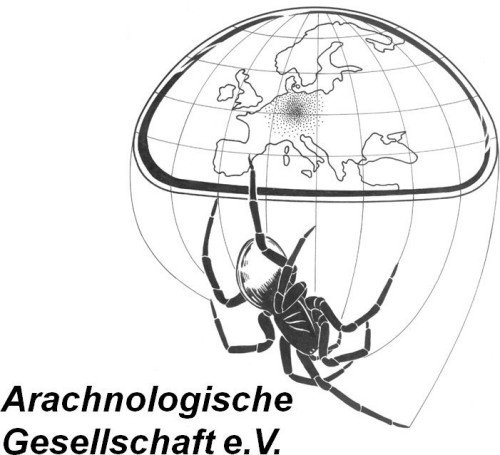
The Atlas of Arachnids of Europe of the Arachnological Society e.V. (Arachnologischen Gesellschaft e.V. (AraGes)) contains more than 2.7 million records of arachnid species; the arachnological database ARAMOB contains more than 80,000 species-specific study records. These data are to be brought into NFDI4Biodiversity in order to make them available in larger contexts and to be able to link them with other types of data (geodata, soil data, media). AraGes would like to see a permanent solution for the data management of professional societies and museums as well as a broad public availability of its own data. The main aim is to improve the data situation, among other things by offering data publication in the association's journal, the creation of a data management plan for the AraGes and the further development of arachnologically relevant thesauri and management tools in the working database Diversity Workbench. In addition, the linkage with other professional societies in NFDI4BioDiversity should help to improve citizen scientist reporting to the atlas database, e.g. records of arachnid species in Europe with habitat information and to facilitate data delivery from scientists to the ecological ARAMOB database.
Learn more about AraGes here.
Bei Fragen zum Use Case schreiben Sie uns gern über unser Kontaktformular.
-
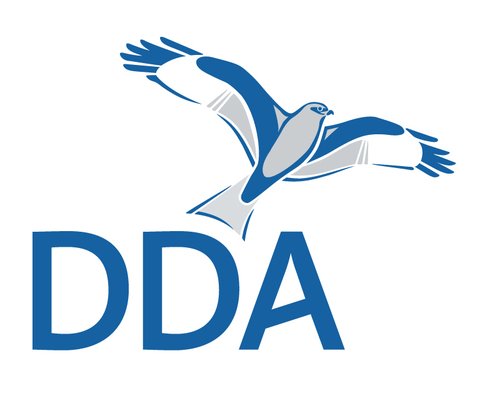
The Umbrella Association of German Avifaunists e.V. (Dachverband Deutscher Avifaunisten e.V. (DDA)) is the federation of all state-wide and many regional ornithological associations in Germany. It advises the Federal Ministry for the Environment, the Federal Agency for Nature Conservation and corresponding institutions of the federal states on technical issues concerning the conservation and protection of native biodiversity. Together with actors in biodiversity research, the DDA carries out scientific projects. In order to fulfill its aims, the DDA also organizes and coordinates the nationwide monitoring of breeding and resting birds and operates the online portal ornitho.de. In total, more than 50,000 volunteers provide more than 10 million observation data annually for the aforementioned purposes.
The goal of this use case is to make these extensive DDA data sets on the distribution and abundance of bird species usable for NFDI, to link them to other data sets, to connect them to the common NFDI infrastructure, and to be able to present them visibly to the research community as well as the public.
Learn more about the DDA can be found here.
Bei Fragen zum Use Case schreiben Sie uns gern über unser Kontaktformular.
-
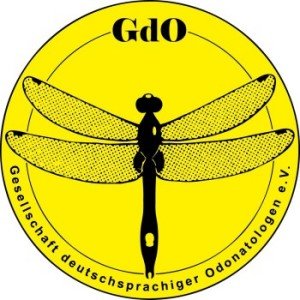
A detailed profile of the use case "Dragonfly species in Germany" can be found here.
The Society of German-speaking Odonatologists (Gesellschaft deutschsprachiger Odonatologen e.V. (GdO)) has more than 1.8 million species-specific data points on the distribution of the 81 dragonfly species recorded in Germany (as of 2021). Data collection, quality assurance and data management are carried out at the level of the federal states, whereby the reporters are mainly active on a voluntary basis. Coordination is partly carried out by the state nature conservation administration (for example in Schleswig-Holstein, Saxony and Bavaria), partly by voluntary working groups (for example in North Rhine-Westphalia, Hesse and Baden-Württemberg). In some federal states, individuals and several regional groups are also responsible (for example in Berlin and Mecklenburg-Western Pomerania). The data is constantly updated in all federal states, and the reports are quality-assured – a true treasure trove of data for practical nature conservation. Due to the decentralised data storage, however, it is not yet possible – neither as a data producer nor as a data user – to access the entire data stock. NFDI4Biodiversity is working on simplifying access. A data portal demonstrator was developed as the first concrete product that illustrates the added value of comprehensive access – a tool that allows dragonfly data to be visualised throughout Germany. Details can be found in the profile of the use case "Dragonfly species in Germany" linked above.
Learn more about the GdO here.
Bei Fragen zum Use Case schreiben Sie uns gern über unser Kontaktformular.
-
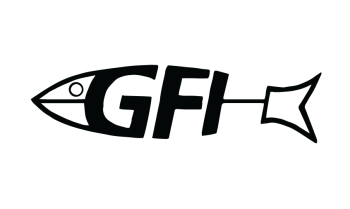
A detailed profile of the use case "Fish Species Atlas" can be found here.
The Society for Ichthyology e.V. (Gesellschaft für Ichthyologie e.V. (GfI)) is an association of fish scientists from science, fisheries and aquaristics. Since 1995, the GfI has been committed to promoting the scientific study of fish and provides a German-language forum for information, communication and publication in the field of fish science. Since 2003, the GfI, together with the Bremen University of Applied Sciences, has maintained the Fish Species Atlas for Germany, Austria and the Wadden Sea, which contains more than 100,000 records on the distribution of all regional freshwater and marine fish species. The GfI would like to share its extensive knowledge about the occurrence of the different fish species in order to contribute to their further research and protection. The aim of the collaboration in NFDI4Biodiversity is to make the data and tools (e.g. the recording option via app as well as data visualisations) also accessible to a broad user community from science, administration and environmental education and to link them to global databases. So far, the main work has been to make the database structure of the Fish Species Atlas compatible with the data infrastructure being created in NFDI4Biodiversity, so that regular bilateral data exchange is easily possible.
You can find out more about the GfI on the website of the association.
Bei Fragen zum Use Case schreiben Sie uns gern über unser Kontaktformular.
-

The project Insects Saxony (Insekten Sachsen) started in the Year of Biodiversity 2010 and is dedicated to the research of native insects. It aims to provide knowledge about native insects and invites interested people to participate in the research of Saxon insects. Insekten Sachsen offers data on insect observations as well as photos to verify species identification. Furthermore, historical data from collections and literature and current data in species-specific maps are provided. The project is interested in enabling the use of these data and providing a service for entomologists to make their data visible and usable. In the context of NFDI4Biodiversity the usecase aims to improve the standardization of data structures and to facilitate and automate data sharing. Furthermore, Insekten Sachsen is interested in incorporating data from other sources.
Find out more about Insekten Sachsen on the project website.
Bei Fragen zum Use Case schreiben Sie uns gern über unser Kontaktformular.
-

Naturgucker.de (translatable as nature watcher or nature gazer) is the largest information portal for nature observers in Germany. Over 100,000 volunteers participate in the project and have contributed more than 13,000,000 observations, including 1,600,000 on plants, 11,400,000 on animals and 160,000 on fungi (as of Sept. 2021). The observations have been documented with 2.4 million images of more than 44,000 species. Naturgucker.de is a strategic partner of NABU for Citizen Science. The data from Naturgucker.de is made available via an infrastructure on the web and via app. The goal of the cooperation in NFDI4Biodiversity is to strengthen the connections to other large observation platforms and to enable an improved data exchange. Naturgucker.de is already working closely with three other use case partners on data exchange: The Hessian State Agency for Nature Conservation, Environment and Geology (HLNUG), Saxon State Agency for Environment, Agriculture and Geology (LFULG) and Saxony-Anhalt State Agency for Environmental Protection (LAU). ) Together the partners are working on the creation of interfaces between the various platforms and nature conservation actors. Furthermore, Naturgucker.de would like to use the collaboration with NFDI4Biodiversity to promote its platform and its manifold application possibilities to a wider audience.
You can find out more about Naturgucker on the project's website.
Bei Fragen zum Use Case schreiben Sie uns gern über unser Kontaktformular.
-
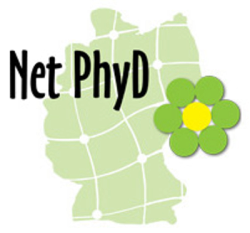
The association Phytodiversity Network Germany (NetPhyD) runs the website Deutschlandflora.de, which is a platform for the collection and analysis of floristic data (i.e. data on plant species). The association is actively involved in the consolidation of floristic data in Germany. NetPhyD is one of the citizen science projects in NFDI4Biodiversity and it has gathered data on about 30 million observations. There are different regional portals that use the infrastructure of Deutschlandflora, whereby each regional portal is and should remain the responsible rights holder of its data. As a use case of NFDI4Biodiversity, NetPhyD wants to improve its data sharing whilst protecting sensitive data, such as occurrence records of rare species. The association wants to provide distribution maps based on their observations and contribute towards stable and regular communication between data collectors in the field and data analysts (e.g. authorities, scientists, etc.). Furthermore, they are interested in access to cloud computing analyses.
You can find out more about NetPhyD on the association's website.
Bei Fragen zum Use Case schreiben Sie uns gern über unser Kontaktformular.
Research organisations and research projects
-
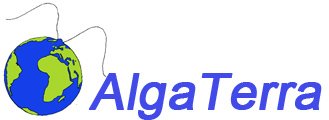
Das AlgaTerra-Information-System verknüpft Forschungsdaten aus naturkundlichen Sammlungen und Klonkulturen mit molekularen Sequenzen von Mikroalgen. Im Use Case Projekt von NFDI4Biodiversity geht es darum, die Nachnutzung des taxonbasierten Faktenwissens von AlgaTerra durch Werkzeuge und Services von cloudbasierten Metabarcoding-Analysen zu ermöglichen. Das AlgaTerra-Information-System enthält kuratierte Daten zu wissenschaftlichen Namen, Synonymen und Taxonkonzepten von Kieselalgen (Diatomeen). Molekulare und ökologische sowie taxonomische Informationen werden innerhalb eines Datenportals präsentiert. Angereichert durch licht- sowie rasterelektronenmikroskopische Bilder zu Diatomeen aus Forschungsprojekten und dem German Barcode of Life-Projekt, werden die gesammelten Daten für wissenschaftliche und naturschutzfachliche Nachnutzung zur Verfügung gestellt.
You can find out more about AlgaTerra on the project's website.
-

Im Projekt Automated Multisensor Stations for Monitoring of BioDiversity (AMMOD) werden Stationen zur automatischen Beprobung der Umwelt entwickelt. Ähnlich wie bei der Wetterbeobachtung soll hier das Vorkommen verschiedener Arten laufend erfasst und ausgewertet werden. Die Sensoren sammeln automatisch akustische, visuelle und olfaktorische Daten sowie Insekten, Pollen und Sporen. Ziel des Use Case Projektes ist es, für die so gesammelten Daten die Interoperabilität zwischen AMMOD und NFDI4Biodiversity herzustellen, die Integration weiterer Daten (z.B. historische Daten, Klima- und Verkehrsdaten) und Citizen-Science-Projektdaten zu gewährleisten, umfassende (Interaktions-)Analysen zu ermöglichen, Anforderungskataloge für das Monitoring zu entwickeln und die Harmonisierung von Komponenten (Entwicklung von Thesauri und Ontologien) umzusetzen.
You can find out more about AMMOD on the project's website.
-

CRITTERBASE ist eine Plattform, die marine Biodiversitätsdaten verwaltet und für Nutzende verfügbar macht. Entwickelt wurde sie vom Alfred-Wegener-Institut für Polar- und Meeresforschung (AWI) und dem Helmholtz-Institut für Funktionelle Marine Biodiversität (HIFMB). Aufgabe von CRITTERBASE ist es, Daten aus vielen verschiedenen Quellen in einem Informationssystem gemeinsam und direkt nutzbar zu machen. Kernkriterien sind ein umfassendes Datenmodell (Methodenvielfalt), die rigorose Qualitätskontrolle aller Daten, eine aktuelle Taxonomie, die Attraktivität der Nutzung für Daten-Lieferanten, Bereitstellen einer komfortablen Schnittstelle für Daten-Nutzende, die nachvollziehbare Entwicklung durch Archivierung in PANGAEA und die Erfüllung der FAIR-Prinzipien. Die Anbindung von CRITTERBASE an die in NFDI4Biodiversity entstehende cloudbasierte Dateninfrastruktur – die Research Data Commons (RDC) – soll dabei helfen, CRITTERBASE zum Kern eines mindestens nationalen Informationssystems für Daten zu marinen Organismen zu machen. Derzeit stellt die zersplitterte Datenhaltung vieler Institutionen hier ein Hindernis dar; dieses soll mit NFDI4Biodiversity überwunden werden.
More about CRITTERBASE on the website for the software.
-
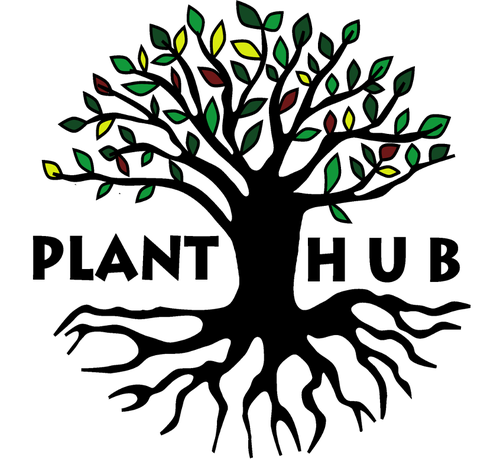
Ziel des PlantHub ist es, die Sichtbarkeit von Forschungsergebnissen und Biodiversitätsdaten am Deutschen Zentrum für integrative Biodiversitätsforschung (iDiv) und seinen Partnerinstitutionen zu vergrößern, den Austausch von Analyseideen und -methoden zu fördern und auch Nicht-Wissenschaftler:innen einen spannenden Zugang in die Welt der Biodiversitätsdaten zu eröffnen. Hierfür bilden 18 Initiativen und Sammlungen die Grundlage des PlantHub, deren vielfältige Informationen zur Biodiversität von Pflanzen im iDiv-Konsortium und darüber hinaus zur Verfügung gestellt, sichtbar gemacht und miteinander verknüpft werden sollen. Die Ergebnisse dieser Verknüpfungen sollen dabei auf einer Online-Plattform für alle Interessierten zugänglich gemacht werden, damit diese die Daten entdecken und analysieren können. Mittelfristig soll die Speicherung der Daten des PlantHub über die Research Data Commons (RDC) – die in NFDI4Biodiversity entwickelte cloudbasierte Dateninfrastruktur – laufen. Die Erfahrung im Aufbau von Datenhaltungs- und Präsentationsstrukturen, die in NFDI4Biodiversity vorhanden ist, wird dabei als große Hilfe erachtet. Im Gegenzug liefert PlantHub mit einer Community eng vernetzter Wissenschaftler:innen aus dem Umfeld des iDiv und den Universitäten Leipzig, Jena und Halle Ideen für innovative Nutzungsszenarien für kombinierte Datensätze und entsprechende Analysen.
Find out more about PlantHub on the platform's website.
-
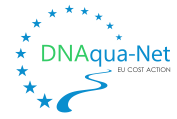
DNAqua-Net ist ein europäisches Netzwerk, das DNA-basiertes Monitoring von Süßwasserökosystemen erforscht. Genetische Methoden sind eine sinnvolle Erweiterung für das Monitoring von Gewässern: Basierend auf Umwelt-DNA (eDNA), d.h. im Wasser hinterlassenen DNA-Spuren, können Lebewesen schnell, günstig und umfassend identifiziert werden. Die Mitglieder von DNAqua-Net, speziell die Universität Duisburg-Essen, verfügen über Hunderte dieser DNA- und eDNA-Metabarcoding-Datensätze. Sie liefern wertvolle Informationen über Lebensgemeinschaften, spielen bislang aber fast ausschließlich in der Forschung eine Rolle. Möglich wäre, sie auch für das Biodiversitätsmonitoring zu nutzen. Fehlende Daten und Analysestandards sind dabei derzeit zentrale Herausforderungen. Über die Mitarbeit in NFDI4Biodiversity möchte DNAqua-Net seine Lösungsansätze und intuitiv zu bedienenden Softwaretools breiter in der Fachgemeinschaft anbieten.
Nähere Infos zu DNAqua-Net finden Sie hier: Webseite des Projekts.
-
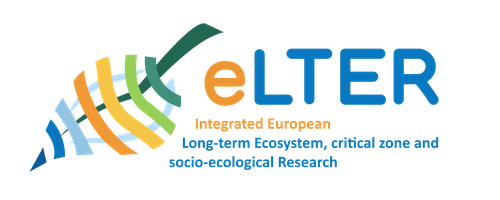
In Zusammenarbeit mit der europäischen Infrastruktur eLTER sollen Datensätze zur Biodiversität aus der ökologischen Langzeitbeobachtung in die cloudbasierte Dateninfrastruktur, an der in NFDI4Biodiversity gearbeitet wird – den Research Data Commons (RDC) – eingespeist werden. Die Integration der deutschen eLTER-Gebiete in NFDI4Biodiversity wird es erlauben, die Daten mit geringem Aufwand über NFDI4Biodiversity als nationalem Knoten mit dem eLTER auszutauschen. Durch die Kombinierbarkeit der qualitativ hochwertigen, über lange Zeiträume erfassten Daten mit anderen Datenquellen können zudem andere NFDI4Biodiversity-Partner profitieren. Die grundlegenden Ziele des Use Cases sind im Sinne der FAIR-Prinzipien formuliert: Daten müssen auffindbar, zugänglich, verknüpfbar und nachnutzbar sein. Der eLTER-Use-Case dient insofern dem besseren Verständnis der Biodiversitätsdynamik und dem vereinheitlichten Umgang mit Metadaten auf europäischer Ebene.
You can find out more about eLTER on the network's website.
-
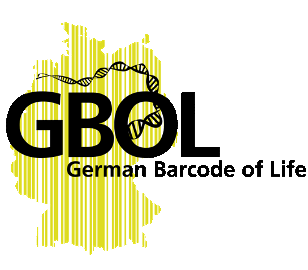
Im Projekt "German Barcode of Life" (GBOL) werden Markergene, die eine Identifikation von Organismen erlauben, in Referenzbibliotheken aller Organismen der Welt erfasst. Die bisherigen Datenbanken sind größtenteils aufgebaut und zu 50-60% vollständig. In der jetzt laufenden dritten Phase des Projekts werden die „Dark Taxa“ erfasst. Metadaten zu den Belegen und den Sequenzen werden in Relationalen Datenbanksystemen gespeichert. Über Sammlungsdaten-Verwaltungssysteme wie DiversityWorkbench werden die Informationen verwaltet und aktualisiert. ABCD-GGBN Standard wird als Austauschformat genutzt. Alle Daten sind über das kanadische kanadische Barcode of Life Data System (BOLD) zugänglich.
Es wurden taxonomische Checklisten (inklusive der Roten Liste und Fauna-Flora-Habitat-Arten) integriert. Im GBOL-Portal sind die Suchergebnisse als CSV-Datei herunterladbar. Das Use Case Projekt hat mehrere ambitionierte Ziele: Zum einen sollen GBOL-Daten an die cloudbasierte Dateninfrastruktur – die Research Data Commons (RDC) – von NFDI4Biodiversity angebunden werden. Geplant sind darüber hinaus eine Schnittstelle für Taxonomie-Checklisten auf verschiedenen Ebenen mit Fauna-Flora-Habitat-Richtlinie und Rote-Liste-Kategorien, die Erweiterung der GBOL-IT-Infrastruktur um Trait Daten sowie eine Erweiterung des GBOL-Portals und der IT-Infrastruktur um Funktionen zur Bestimmung von Spezies (z.B. Citizen-Science-Projekte).
Ziel des Use-Case-Projektes ist es,
- GBOL-Daten an die RDC anzubinden,
- ein Application Programming Interface (API) für Taxonomie-Checklisten auf verschiedenen Ebenen mit Fauna-Flora-Habitat-Richtlinie und Rote-Liste-Kategorien zu schaffen
- und die Erweiterung der GBOL-IT-Infrastruktur um Trait Daten sowie die des GBOL-Portals sowie der IT-Infrastruktur zur Bestimmung von Spezies (z.B. Citizen-Science-Projekte) durchzuführen.
More about GBOL on the project website.
-
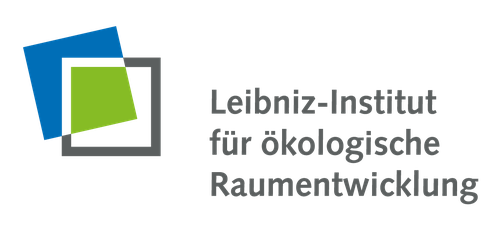
Der Monitor der Siedlungs- und Freiraumentwicklung (IÖR-Monitor) ist eine Forschungsdateninfrastruktur des Leibniz-Instituts für ökologische Raumentwicklung (IÖR), das auf der kombinierten Verarbeitung amtlicher Geobasis-, Geofach- und statistischer Daten basiert. Aus diesen Daten werden 85 sogenannte Indikatoren abgeleitet, die ihrerseits in 14 thematische Kategorien unterteilt sind, darunter etwa Siedlung, Freiraum oder Verkehr. In einem Kartenviewer können Landnutzung, Landbedeckung und Landschaftsqualität sowie deren Veränderung räumlich, zeitlich und thematisch hochauflösend für Deutschland dargestellt werden. "Landnutzungsveränderungen sind eine Grundlage für Biodiversitäts-, Klima-, Nachhaltigkeits- und Erdsystemforschung", sagt Gotthard Meinel, Forschungsbereichsleiter Raumbezogene Information und Modellierung am IÖR, über seine Motivation, in NFDI4Biodiversity mitzuarbeiten. Ziel ist es, die Daten des IÖR-Monitors in NFDI4Biodiversity zu integrieren. Andere Biodiversitätsdaten, etwa zum Vorkommen von Tier- und Pflanzenarten, ließen sich so mit den Daten zu Bodentypen, Versiegelung oder Besiedlung von Landflächen verknüpfen und über verschiedene Zeitspannen ins Verhältnis setzen, um neue Erkenntnisse zu den Treibern von Biodiversität zu gewinnen. Darüber hinaus möchte das IÖR sein Datenangebot bekannter machen und ist an Feedback zu den Funktionalitäten des IÖR-Monitors interessiert.
You can find out more about the IÖR Monitor on the platform website.
-

The Use Case Leibniz Institute for Regional Geography (IFL) focuses on developing spatial data visualization and communicating biodiversity-related data to different stakeholders. A particular interest lies in question regarding data transparency and different aspects of (visual) data interpretation. In this sense, the IFL Use Case has not had its own data but is rather contributing its expertise in questions regarding data visualization. The IFL has become a partner within the NFDI4Biodiversity project because questions regarding the visualization of data (e.g. handling of uncertainties and missing data) also apply to scientists when working with biodiversity data. On top of that, within the NFDI4Biodiversity project, the IFL tries to strengthen further the role of data visualization as a tool to develop new scientific questions and knowledge.
You can find out more about the IfL and the collaboration with NFDI4Biodiversity on the Institute's website.
Bei Fragen zum Use Case schreiben Sie uns gern über unser Kontaktformular.
-
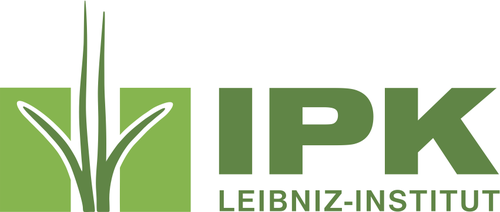
The use case project of the Leibniz Institute of Plant Genetics and Crop Plant Research (IPK) is about data on the genetic diversity of crop plants. The main goal of the project is to store and analyze molecular passport data of plant genetic resources in the Research Data Commons (RDC), the cloud-based data infrastructure of NFDI4Biodiversity. The molecular passport data ("diversity matrix") of selected accessions of the IPK genebank will be transformed into a data structure so that it can be stored in the RDC infrastructure and used as a basis for analyses. For example, a user has a "diversity vector" of a genotype of interest and searches for the most phylogenetically similar genebank material that originates from a particular geographic region or has certain characteristics. In the course of this work, concepts for tool conservation and reusability have already been published using the example of a developed Imputation Tools. In addition, IPK contributes to NFDI4Biodiversity by contributing its expertise in research data management and software development, as well as in setting up and operating IT infrastructures. The services offered by IPK will also be operated within the consortium beyond the project funding.
More about the IPK: www.ipk-gatersleben.de
-
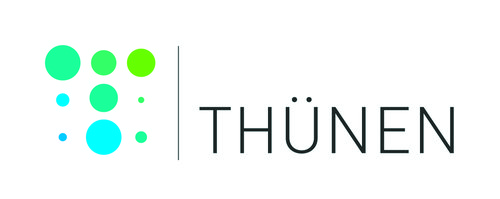
This use case project is about building bridges to agricultural sciences and the NFDI consortium FAIRAgro.
Agriculture plays an important role in the conservation and promotion of biodiversity: Around 50% of Germany's land is used for agriculture. However, there is still a lack of representative and scientifically reliable data for this area, which would allow us to make statements about changes in land use, agricultural structure and biodiversity and to evaluate the effectiveness of agri-environmental policy support instruments on biodiversity. The nationwide monitoring of biodiversity in agricultural landscapes (MinViA) is intended to close this gap in the future.
Scientists from the Thünen Institute and the Julius Kühn Institute, as well as the Federal Agency for Agriculture and Food, are developing monitoring programs in a five-year pilot phase (2019-2023) that will provide information on changes in the design of agricultural landscapes as well as on the status and development of functional groups such as pollinators, beneficial insects, pests, and soil (micro)organisms. In addition, the consortium is designing indicators relevant to agroecosystems and urgently needed to inform policymakers and the interested public about changes in agricultural landscapes.
As the coordinating institute, the Thünen Institute is committed to overarching data exchange within nationwide biodiversity monitoring. The Thünen Institute is a member of the FAIRagro consortium and contributes an open-source research data platform. This can be used as a reference implementation for FAIR data exchange and will be connected to the Research Data Commons (RDC), the cloud-based infrastructure developed in NFDI4Biodiversity, as part of the use case project. In the future, the data sets collected in MonViA will be stored in the reference implementation of an agricultural atlas used at the Thünen Institute, and the results will thus be made available to the public. In case of continuing the piloted monitoring programs, a FAIR data flow into the RDC would thus be ensured.
You can find out more about the Thünen Institute on its website.
Find out more about FAIRagro on the consortium's website.
Bei Fragen zum Use Case schreiben Sie uns gern über unser Kontaktformular.
Public authorities and National Parks
-
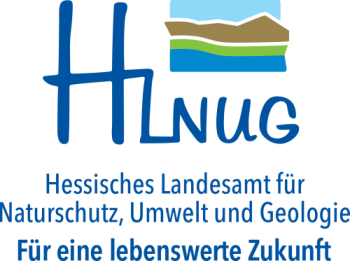
The Hessian State Agency for Nature Conservation, Environment and Geology (HLNUG) is one of three NFDI4Biodiversity use case projects in cooperation with state agencies. Together with the Saxony-Anhalt State Agency for Environmental Protection (LAU), the Saxony State Agency for the Environment, Agriculture and Geology (LfULG) and Naturgucker.de, HLNUG aims to promote data exchange among state agencies and with other conservation stakeholders and biodiversity data owners. The main focus of this use case is on the biodiversity data collection software MultibaseCS, which is used beyond the state agencies by many official nature conservation actors in Germany. As part of NFDI4Biodiversity, existing interfaces will be updated and, if necessary, new interfaces will be created between this collection software and the NFDI4Biodiversity Research Data Commons, the cloud-based data infrastructure for collaborative work with biodiversity data. This work is intended to open up new data sources and promote interconnectivity between existing data sources. As a first step toward this improved bidirectional data exchange, HLNUG and its partners are currently developing minimum data standards for species occurence data.
You can find out more about the HLNUG on the website of the state office.
Bei Fragen zum Use Case schreiben Sie uns gern über unser Kontaktformular.
-
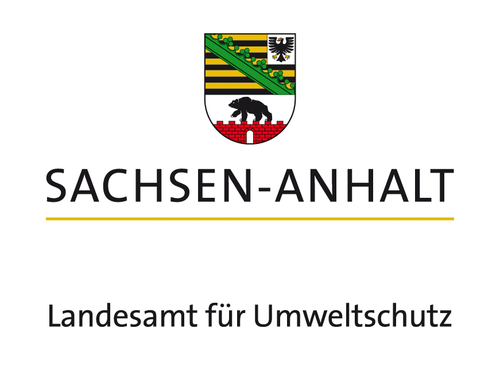
The Saxony-Anhalt State Agency for Environmental Protection (LAU) has different kinds of biodiversity data, including animal species data (MultiBaseCS databases), plant species data (WinArt databases) and data on flora-fauna habitat types (BioLRT databases).
Together with the Hessian State Agency for Nature Conservation, Environment and Geology (HLNUG) and the Saxon State Agency for Environment, Agriculture and Geology (LfULG) and Naturgucker.des, LAU aims to foster exchange and collaboration among the state agencies and with the NFDI4Biodiversity network. At the center of these use cases is the biodiversity data collection software MultibaseCS, which is used beyond the state offices by many official nature conservation actors in Germany. LAU and its partners are interested in developing cross-state data standards and workflows to simplify data exchange whilst complying to data protection regulation. This will not only allow them share official data more easily but also to gain access to new data sources (e.g. citizen science projects).
You can find out more about the LAU on the website of the LAU.
Bei Fragen zum Use Case schreiben Sie uns gern über unser Kontaktformular.
-

Im Use Case Nationalpark Bayerischer Wald geht es um “Multitaxon”-Daten – Daten also, die sich nicht nur auf eine, sondern auf viele in einem bestimmten Gebiet vorkommende Arten beziehen. Die Datenerfassung erfolgt unter Verwendung von Insektenfallen und Fotokameras. Zusätzlich werden Umweltfaktoren wie Mikroklima und Waldstruktur erfasst. NFDI4Biodiversity unterstützt den Nationalpark im Datenmanagement, indem eine von der Universität Jena gehostete Instanz des Informationssystem BEXIS2 zur Verfügung gestellt wird.
Im Rahmen des Use Case werden Lösungen für die Datenhaltung getestet, von denen auch andere Nationalparkverwaltungen profitieren können. Damit können die wertvollen Langzeitdaten auch für andere Interessierte, zum Beispiel Forschende, nutzbar gemacht werden. Mit der Bereitstellung einer BEXIS2-Instanz durch NFDI4Biodiversity und der erfolgreichen Mobilisierung von Daten im BioKlim-Projekt des Nationalparks wurde bereits ein Hauptziel des Use Cases erreicht. Der Nationalpark ist auch Mitglied im LTER-D Netzwerk, über das Daten aus Langzeitbeobachtungen über den weiteren NFDI4Biodiversity-Use-Case eLTER mit der europäischen Forschungsinfrastruktur eLTER RI ausgetauscht werden sollen.
You can find out more about the Bavarian Forest National Park on the website of the park administration.
-
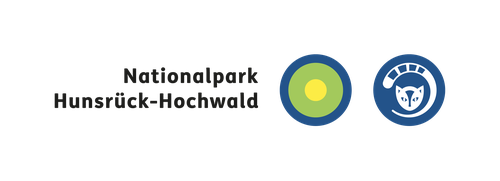
The Hunsrück-Hochwald National Park operates a research server for the national natural landscapes in order to provide the interested professional public with information on activities, projects, publications and available data for so far four national parks (Hunsrück-Hochwald, Hainich, Black Forest and Eifel). Among other things, metadata are published on studies that have taken place on the territory of the participating national parks. However, the metadata on the research server only refer to the measurement data. Most of the associated data resides with the research organizations conducting the studies. Therefore, one goal of the use case is to make these data available as well. In addition, data that the national parks collect themselves as part of their research mission will be made accessible. In NFDI4Biodiversity, the Hunsrück-Hochwald National Park Administration would like to help design interfaces to existing research data systems, integrate information from other organizations' databases into its work, and make its data publicly available. It is also interested in the cloud-based data infrastructure being created in NFDI4Biodiversity - the Research Data Commons (RDC) - for future data management.
You can find out more about the Hunsrück-Hochwald National Park on the website of the park administration.
Bei Fragen zum Use Case schreiben Sie uns gern über unser Kontaktformular.
-
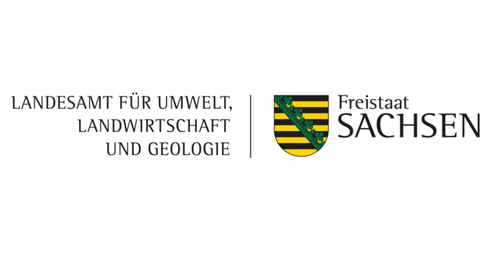
The use case of the Saxonian State Agency for the Environment, Agriculture and Geology (LFULG) is closely related to the other use cases with state agencies (i.e. Saxony-Anhalt State Agency for Environmental Protection (LAU) and Hesse State Agency for Nature Conservation, Environment and Geology (HLNUG)) and to Naturgucker.de. The particular focus of the LFULG use case is on developing minimum data standards that enable simplified bidirectional data exchange between authorities and nature conservation stakeholders. Within NFDI4Biodiversity, these standards will be co-developed with the other federal states. The main commonality between the use cases is the biodiversity data collection software MultibaseCS, which is used beyond the federal state agencies by many official nature conservation actors in Germany. The LFULG is interested in developing software interfaces using the minum data standards to significantly simplify and standardize data exchange. Through this process, the LFULG aims to gain access to new data sources (e.g. citizen science projects). Furthermore, this will allow for easier sharing of the official data with interested users.
You can find out more about the LFULG on the website of the state office.
Bei Fragen zum Use Case schreiben Sie uns gern über unser Kontaktformular.
-
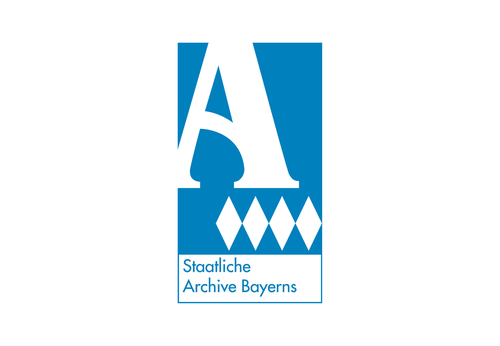
The General Directorate of the archives of Bavaria State is the central authority for archives in Bavaria. It is responsible for the fundamental and cross-sectional tasks of the Bavarian State Archives. This includes the management and coordination of central specialized tasks such as evaluation, acquisition, ordering and indexing of analogue and digital archival materials according to uniform principles, preservation, IT and digital archives, historical-political educational work (e.g. exhibitions and publications) as well as training and continuing education for the Bavarian archival service.
Nine state archives are subordinate to the General Directorate: the Bavarian Main State Archives and the state archives in Amberg, Augsburg, Bamberg, Coburg, Munich, Nuremberg, Landshut and Würzburg. The holdings stored in the state archives range from the early Middle Ages to the present day and cover all areas of state administration. Due to the broad spectrum of their holdings and close cooperation with the offering agencies of the Free State of Bavaria, the Archives of Bavaria State can contribute various historical and current data on biodiversity research to the NFDI4Biodiversity consortium. Examples include early descriptions of forestry and agriculture, documents and data collections of modern state administration, such as those of the forestry offices, or current data from the agricultural, surveying and environmental administration.
A logical archiving interface for such biodiversity data is to be designed in a joint model project with the Bavarian Natural History Collections (SNSB). The goal is the evaluation, automated transfer, structuring, digital indexing and metadata enrichment of the data and their connection to the joint GFBio portal of the NFDI4Biodiversity. Persistent Identifier (PI) and the ABCD standard guarantee the best possible data quality for researchers.
More information can be found on the Website of the State Archives of Bavaria.
Details of the archives' holdings can be found via the Findmitteldatenbank.
Bei Fragen zum Use Case schreiben Sie uns gern über unser Kontaktformular.
Explore three Use Case projects in more detail
How exactly does the cooperation between the use case partners and NFDI4Biodiversity work? Our focus pages offer exciting insights.
Society of German-speaking Odonatologists e.V. (GdO)
Around two million dragonfly data, which should also be available to research and nature conservation – this is what we are working on with the dragonflies of the GdO.
Society for Ichthyology (GfI)
The GfI fishologists have more than 100,000 data sets on the distribution of all regional species. Together we are working to make this valuable knowledge more accessible – so that it can benefit the protection of fish fauna.
IÖR Monitor
Visualisable long-term data on land use and land cover can enrich biodiversity research enormously. We are working with the Leibniz Institute for Ecological Spatial Development (IÖR) to integrate the data from the IÖR Monitor into NFDI4Biodiversity.